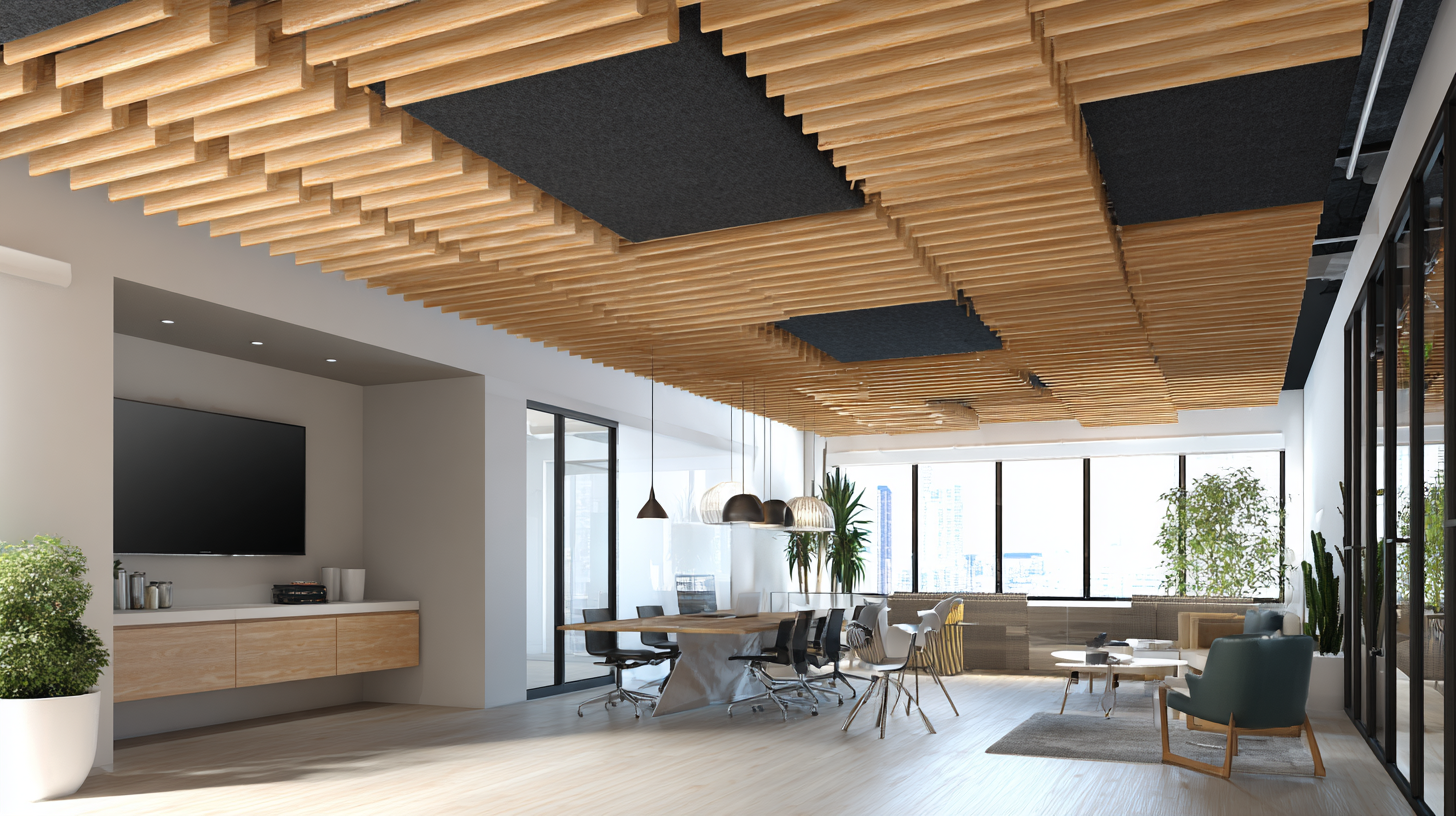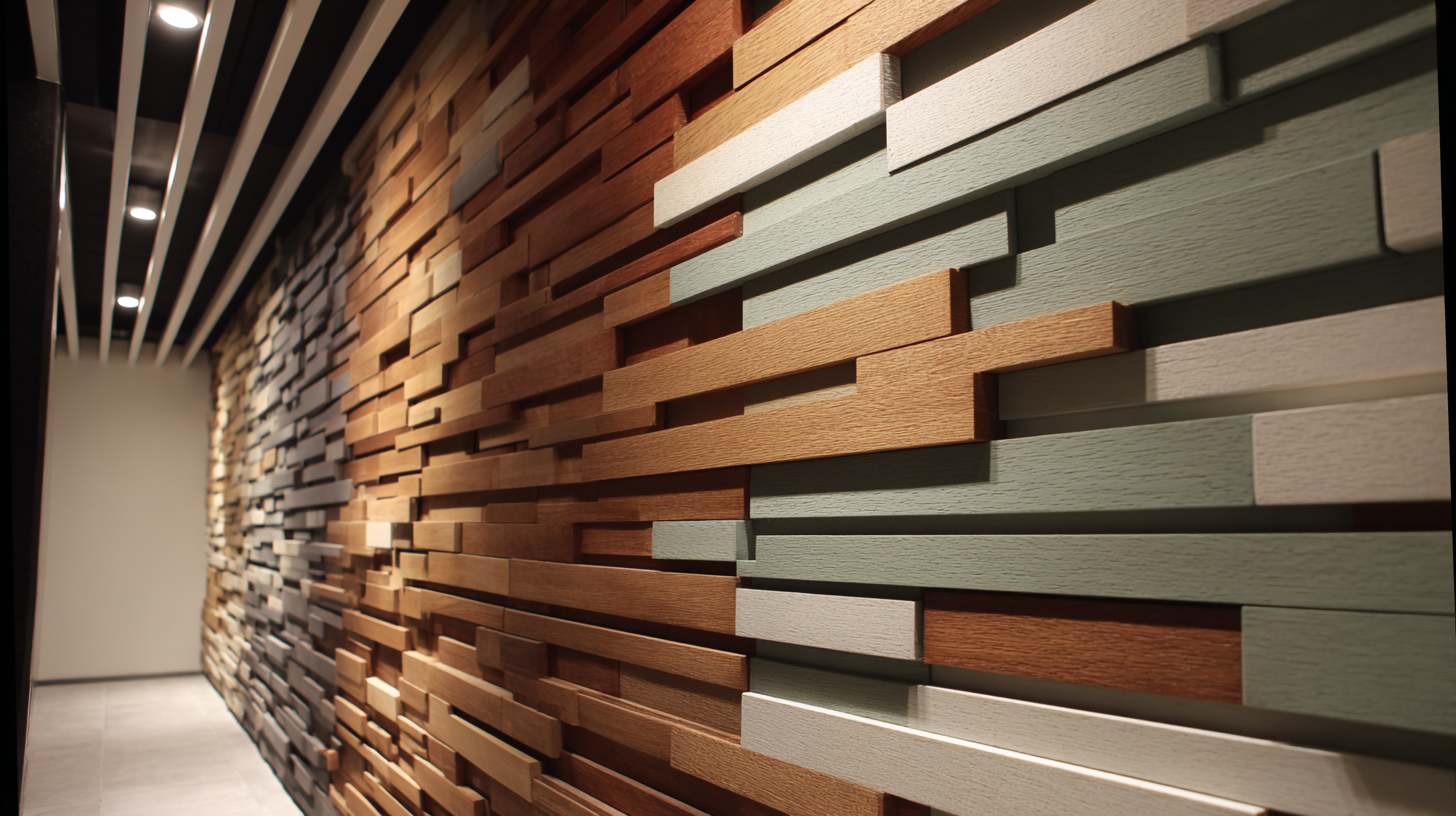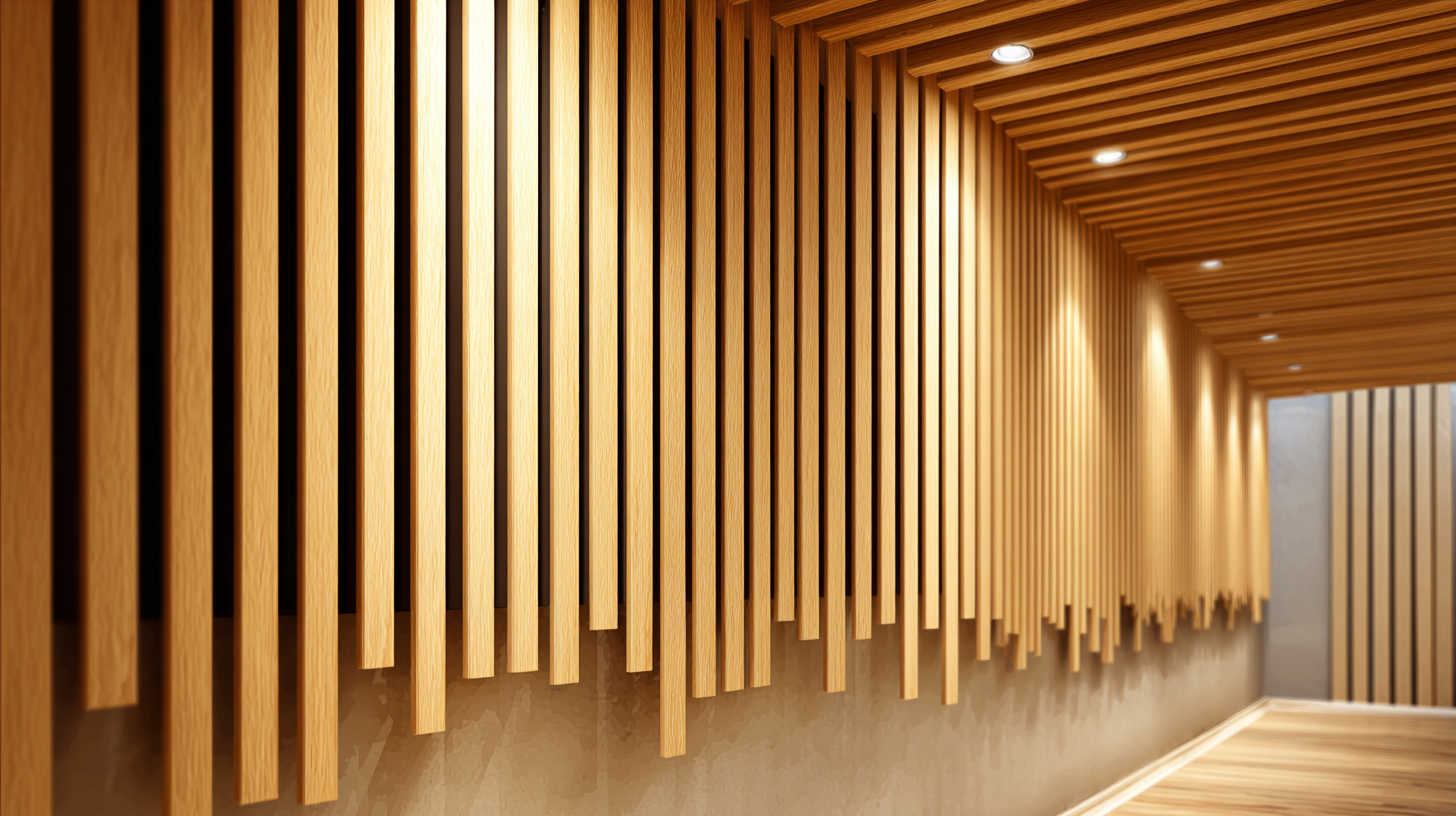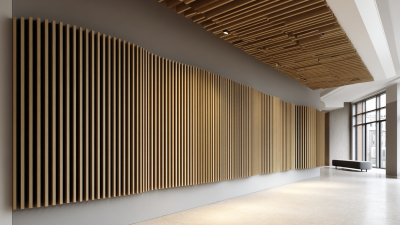How to Optimize Your Space with Slat Wall Acoustic Panels for Enhanced Sound Quality
In today's fast-paced world, the importance of creating a harmonious and conducive environment cannot be overstated, especially in spaces where sound quality is paramount. One innovative solution to enhance your auditory experience is the use of Slat Wall Acoustic Panels. These versatile panels not only optimize your space aesthetically but also effectively manage sound reflections and reverberations.

By strategically incorporating Slat Wall Acoustic Panels into your environment, you can transform any room into a sound-friendly oasis, whether it’s a home theater, an open office, or a music studio. This guide will delve into practical tips and creative ideas on how to maximize the potential of Slat Wall Acoustic Panels to improve sound quality while complementing your interior design.
Join us as we explore the myriad benefits and applications of these acoustic solutions for an optimized auditory experience.
Benefits of Slat Wall Acoustic Panels in Modern Interior Design
Slat wall acoustic panels have rapidly gained popularity in modern interior design, bridging the gap between aesthetic appeal and functional acoustic performance. These panels are not only visually striking, adding texture and depth to spaces, but they also significantly contribute to sound quality. By strategically positioning slat wall panels, designers can minimize ambient noise, reduce echo, and create a more pleasant auditory experience in various environments, such as offices, studios, and open-concept homes.
Another key benefit of slat wall acoustic panels lies in their versatility. Available in various materials, finishes, and colors, they can be seamlessly integrated into any design theme, whether contemporary, rustic, or minimalist. Furthermore, the slat design allows for customization, enabling the creation of unique patterns and arrangements that complement existing décor. This adaptability makes slat wall panels not just a soundproofing solution but also a design statement, marrying functionality with style to enhance the overall ambiance of a space.
Key Acoustic Principles: Understanding Sound Absorption and Diffusion
 Understanding sound absorption and diffusion and diffusion is pivotal for optimizing acoustic environments, particularly when utilizing slat wall acoustic panels. Sound absorption refers to the process by which sound energy is converted into heat when it encounters a material, thus preventing it from reflecting back into the space. According to a report from the Acoustical Society of America, materials with high absorption coefficients, such as foam and certain fabrics, can absorb more than 80% of the sound energy across various frequencies. This is crucial in spaces where echo and reverberation need to be minimized to enhance clarity, such as recording studios or conference rooms.
Understanding sound absorption and diffusion and diffusion is pivotal for optimizing acoustic environments, particularly when utilizing slat wall acoustic panels. Sound absorption refers to the process by which sound energy is converted into heat when it encounters a material, thus preventing it from reflecting back into the space. According to a report from the Acoustical Society of America, materials with high absorption coefficients, such as foam and certain fabrics, can absorb more than 80% of the sound energy across various frequencies. This is crucial in spaces where echo and reverberation need to be minimized to enhance clarity, such as recording studios or conference rooms.
On the other hand, sound diffusion involves scattering sound waves in different directions, which can improve the overall acoustic quality of a room. Research from the National Research Council suggests that diffusive surfaces can enhance sound quality by creating a balanced acoustic profile that avoids dead spots in sound delivery. The integration of slat wall acoustic panels can serve dual purposes—acting both as absorbers and diffusers—especially when designed with varying slat depths and spacing. This capability enhances the acoustic performance of a space, making it more conducive for communication and auditory experiences.
Selecting the Right Materials: Types of Slat Wall Panels and Their Performance
When selecting slat wall acoustic panels to optimize your space for enhanced sound quality, the choice of materials is crucial for achieving optimal performance. Various types of slat wall panels are available, each designed to meet specific acoustic needs. For instance, MDF (medium-density fiberboard) panels not only offer a sleek aesthetic but also provide an excellent balance between sound absorption and durability. According to the Acoustical Society of America, using materials with a high Noise Reduction Coefficient (NRC) can effectively reduce sound reverberation in a room, with values above 0.75 being ideal for environments such as studios or conference rooms.
In addition to MDF, other material options such as plywood and acoustic foam-core panels are gaining popularity due to their lightweight nature and versatility. Research from the Journal of Architectural Acoustics shows that foam-core panels can achieve NRC ratings similar to solid wood panels while being more cost-effective and easier to install. The right combination of slat wall materials not only enhances acoustic performance but also contributes to the overall design aesthetic of your space, making it essential to consider both functionality and style when selecting the perfect slat wall solution.
How to Optimize Your Space with Slat Wall Acoustic Panels for Enhanced Sound Quality - Selecting the Right Materials: Types of Slat Wall Panels and Their Performance
| Panel Type | Material | Thickness (inches) | Sound Absorption Coefficient (NRC) | Installation Method | Recommended Use |
|---|---|---|---|---|---|
| Slat Wood Panel | Plywood | 1.5 | 0.60 | Directly mounted | Home theaters, recording studios |
| Slat Acoustic Panel | Mineral wool | 2.0 | 0.85 | Wall-mounted | Offices, classrooms |
| Slat PVC Panel | PVC | 0.75 | 0.45 | Adhesive | Retail spaces, exhibitions |
| Slat Fabric Panel | Fabric over foam | 1.0 | 0.70 | Suspended | Auditoriums, music venues |
Installation Techniques: Maximizing Acoustic Benefits in Various Spaces
 Installing slat wall acoustic panels can significantly enhance sound quality in various spaces, particularly in studios and health clubs where noise control is vital for an optimal experience. To maximize acoustic benefits, begin by assessing the area and determining the Maximum Room Capacity (MRC). This will help you gauge how many participants can comfortably fit, leading to better sound management during group classes.
Installing slat wall acoustic panels can significantly enhance sound quality in various spaces, particularly in studios and health clubs where noise control is vital for an optimal experience. To maximize acoustic benefits, begin by assessing the area and determining the Maximum Room Capacity (MRC). This will help you gauge how many participants can comfortably fit, leading to better sound management during group classes.
When preparing for installation, consider the arrangement of the panels. Strategically placing slat wall panels on walls can help diffuse sound waves, reducing echoes and improving overall clarity. In addition, using a combination of different panel heights and orientations can create a more dynamic soundscape, enhancing the experience for users.
Ensuring that the panels are installed at optimal heights, typically around ear level when participants are in motion, can make a substantial difference in sound quality and acoustic performance. By understanding the layout and dynamics of the space, you can achieve a harmonious environment that promotes both functionality and enjoyment.
Cost-Effectiveness: Analyzing ROI on Acoustic Panel Investments for Enhanced Sound Quality
Acoustic panels, particularly slat wall designs, are gaining attention for their dual benefit of enhancing sound quality while also serving as a stylish element in workspace design. Investing in these panels can lead to significant improvements in audio clarity, which is crucial for content creation and online meetings. When considering the return on investment (ROI), it’s essential to analyze the long-term benefits. Enhanced sound quality can elevate the professionalism of your content, leading to better audience engagement and potential revenue growth.
Creating a professional content marketing studio requires a careful balance between aesthetics and functionality. Slat wall acoustic panels offer a visually appealing solution that complements various décor styles while effectively reducing noise. By integrating these panels into your workspace, you can create an environment that fosters creativity and productivity. As your content quality improves, so too does the opportunity for increased visibility and brand growth, justifying the initial investment and ensuring a high ROI over time.
Sound Quality Improvement with Slat Wall Acoustic Panels
This bar chart represents the sound quality improvement measured in decibels (dB) before and after the installation of slat wall acoustic panels. The data shows a significant reduction in sound levels, highlighting the effectiveness of acoustic panels in enhancing sound quality.
Related Posts
-

The Future of Sustainable Design with Slat Wall Acoustic Panels
-

Choosing the Top 5 Manufacturers for Best Slat Wall Acoustic Panels Worldwide
-

Exploring Unique Alternatives to Square Acoustic Panels for Enhanced Sound Control
-

What are the Benefits of Using Acoustic Building Materials for Global Construction Projects
-

How to Enhance Your Space with Interior Acoustic Panels for Better Sound Quality
-

What are the Benefits of Using Slat Wall Acoustic Panels for Sound Absorption
-

Phone
-

E-mail
-

wechat
wechat

-

whatsapp
whatsapp


